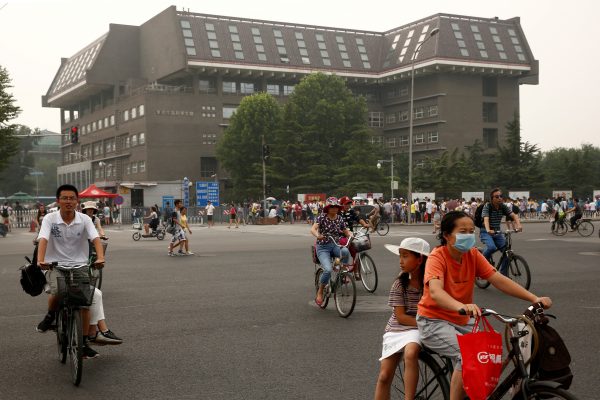International education is Australia’s largest service export and third largest export overall, worth AU$18.8 billion in 2014–2015. Australian universities are viewed internationally as reputable, high quality educational institutions with safe campuses. Scaled for population, Australia ranks second only to Switzerland as the world’s most attractive study destination. Chinese international students make up 37.3 per cent of the international student enrolments in the higher education sector, or 110, 543 students.
The desire to improve their global rankings leads Australian universities to compete to attract students. As government funding for tertiary education as a proportion of GDP has decreased year on year, universities increasingly rely on international students to fill this shortfall. A Grattan Institute study found that one in every five tuition dollars paid by university students in 2012 was diverted to fund research. Since commerce units are comparatively cheaper to teach, this revenue can also be used to cross-subsidise more expensive courses in other disciplines.
An overreliance on revenue from international students to fund research is clearly felt by some education providers more than others. Chinese students comprised 60 per cent of all international student enrolments at the Australian National University in 2016 — a vulnerability which prompted the university to market in alternate countries to diversify its international student intake. At the University of Sydney, 61 per cent of all students in the Business School are international students from the People’s Republic of China. Certain states are also more reliant on international student revenue than others, with 38.2 per cent of all international students in Australia studying in New South Wales, followed by 34.6 per cent in Victoria. The education sectors in these states in particular would suffer if there was a significant decline in demand.
In addition to financial risk, Chinese international students also continue to be isolated in Australian university communities. As the largest group within the international student cohort, their isolation is the most pronounced. Catherine Gomes’ 2014 study gives ample evidence to suggest that Asian international students fail to integrate into, or even engage with, the rest of Australian society and the university community, instead creating their own nationality-based groups. This sentiment is echoed in private among Chinese student leaders and academics, and is described anecdotally in the media by Chinese students.
Chinese international students also experience animosity, discrimination, and at worst, explicit racism from the community and local students. Attacks on Chinese students in the University of Sydney’s Victoria Park and in Hurstville, discussions of repealing 18C of the Racial Discrimination Act ,‘No Asians’ signs in Redfern and ‘Keep Australia White’ signs in Melbourne have all dominated headlines on popular Chinese international student news outlets. A Roundtable in 2010 hosted by the Academy of Social Sciences in Australia, the Human Rights Commission and Universities Australia stressed that racism was on the increase, and this constituted a risk to Australian universities’ reputation as a safe educational environment.
While it is recognised that a significant amount of Chinese international students do not participate in local student organisations and events, they are active participants in activities and support services organised by the Chinese Consulate and wholly Chinese student groups. Local students also have much to gain from increased integration. Yet few do. A lack of engagement represents a lost opportunity to foster life-long people to people connections between Australia and China.
Negative stereotypes about international students are propagated by local students verbally and on social media, and vice versa. There is a sense among local students that Chinese international students are exploited as ‘cash cows’, and refrains about English-language proficiency and academic competence are common.
These stereotypes are in part reinforced by the claim that Australian education providers are lowering their academic standards in order to accommodate Chinese international students. Lowered entry standards, falsified entry requirements and subpar classroom standards — often owing to language difficulties — mean that other students receive a less rigorous academic experience.
Australian academics frequently note the difficulties of teaching Chinese international students accustomed to a passive, rote-learning based system as opposed to the critical thinking, active tradition of Western universities. A senior lecturer at the University of Sydney said that 20 per cent of his students this semester lacked the requisite English skills for the course but he felt pressured to pass them.
Another problem is the rise of unregulated institutions providing academic services ranging from essay editing and writing, to outright altering of exam marks. These institutions primarily cater to Chinese students.
Other than the obvious ethical quandary, falling academic standards in the long run could mean less Chinese international students study at Australia’s universities as rankings decline. This would be a huge blow to the financial structure that underpins Australia’s universities, and the quality of education for all students would likely suffer.
Higher education is fundamental to Australian society. But universities must balance their desire to increase Chinese international student numbers with maintaining academic standards. They must also be cognisant of how overreliance on one source country exposes them to substantial financial risk. Finally, universities must improve Chinese students’ engagement with Australian society and the university community, lest they risk a threat to social cohesion within university communities.
Jacinta Keast is a Research Assistant at China Matters.

